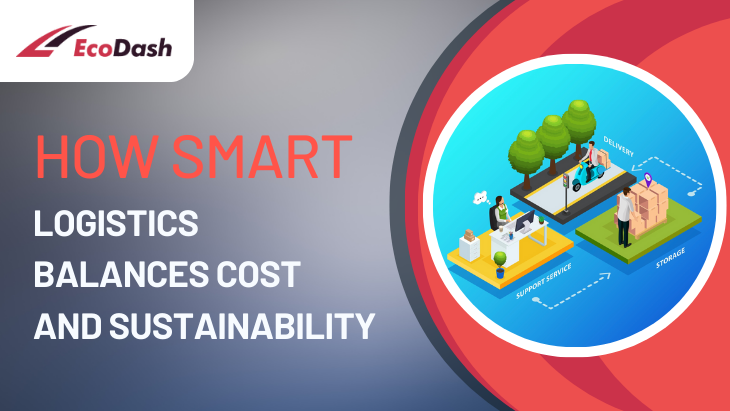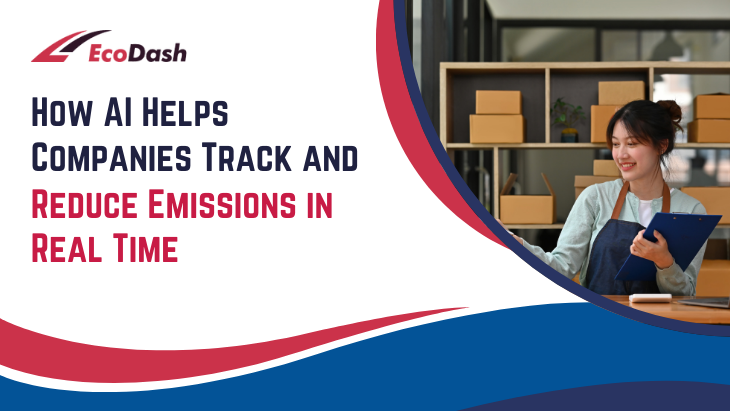As climate change brings the world to its knees, the transportation industry continues to be one of the largest emitters of carbon dioxide in the world. Fast Grocery Delivery in Canada. The call for environmentally friendly mobility solutions is needed more than ever before, and companies, governments, and individuals are looking for means to decarbonize their activities. Step into Eco-Dash, a pioneering method of transforming the path to sustainability one mile at a time. Through harnessing the latest technology, visionary policies, and environmentally friendly driving practices, we can make transportation a cleaner, more sustainable means that serves the people and the planet.
The Need for Sustainable Transportation
The transportation sector is responsible for almost 25% of worldwide CO2 emissions, with cars, trucks, airplanes, and ships burning huge quantities of fossil fuels. The effects of unlimited emissions are higher global temperatures, deteriorating air quality, and more health threats to communities globally.
Transportation sustainability is no longer a choice it is a requirement. Governments are mandating tighter emissions standards, consumers are calling for cleaner options, and businesses are rethinking logistics and fleet management practices. Eco-Dash is a promise of sustainability, making every mile driven count towards a cleaner, healthier planet.
Eco-Dash: The Future of Sustainable Mobility
Eco-Dash is an extensive sustainability program that combines innovative vehicle technologies, smart route optimization, and green infrastructure. It focuses on three main pillars: electrification, efficiency, and environmentally friendly behavior.
1. Electrification: The Transition to Clean Energy
Transitioning to electric vehicles (EVs) is perhaps one of the best ways to limit transport emissions. A changeover from gas-run engines to battery-run equivalents has the potential to drastically slash carbon prints, especially when renewable energies are used to charge the EVs.
The Growth of EV Adoption: The big automakers are investing significantly in the manufacture of electric vehicles, with newer models featuring extended ranges, rapid charging times, and improved affordability. Governments are also offering incentives, tax credits, and investments in infrastructure to speed up adoption.
Charging Infrastructure Growth: The viability of EVs is based on mass charging networks. Solar- and wind-powered intelligent charging stations are making it easier than ever to travel sustainably.
Hydrogen and Alternative Fuels: Beyond EVs, hydrogen fuel cells and biofuels offer promising alternatives for heavy-duty transport, making all vehicle types sustainable.
2. Efficiency: Smart Mobility Solutions
Sustainability is not only about what a vehicle runs on but also about how efficiently it runs. AI-based technologies, predictive analytics, and smart route planning can lower emissions and fuel consumption.
AI-Based Route Optimization: Upgraded GPS solutions utilize current traffic conditions and artificial intelligence to offer the most energy-efficient routes, cutting idle time and excessive miles.
Carpooling and Rideshare: Ridesharing systems such as Uber, Lyft, and BlaBlaCar encourage ridesharing, cutting the number of vehicles on the roads and decreasing congestion.
Smart Fleet Management: Companies operating delivery and transport fleets can utilize IoT sensors and telematics to track vehicle performance, eliminate fuel waste, and plan predictive maintenance.
3. Eco-Conscious Behavior: Driving with Sustainability in Mind
Technology is a key contributor to Eco-Dash, but so are the driving habits of the individual. Basic modifications to driving behavior can contribute to dramatic fuel savings and emission reductions.
Eco-Driving Methods: Acceleration smoothly, driving at constant speeds, and minimizing avoidable braking enhance fuel efficiency.
Tire Condition and Vehicle Service: Well-maintained tires and regular vehicle servicing can increase mileage and lower emissions.
Public Transport and Micromobility: Promoting bicycles, e-scooters, and public transport usage can drastically lessen urban congestion and pollution.
The Business Contribution to Sustainable Transport
Companies have a special chance to be at the forefront of green mobility. By incorporating Eco-Dash principles into their business, companies can save money, achieve sustainability objectives, and improve their brand reputation.
Green Logistics & Last-Mile Delivery: Amazon, UPS, and FedEx are making investments in electric delivery trucks, drones, and self-driving robots to minimize their environmental impact.
Corporate EV Fleets: Companies that switch to electric or hybrid vehicle fleets for worker transport can reduce fuel costs and emissions.
Sustainable Travel Policies: Promoting employees to take sustainable travel methods, including telecommuting, cycling, or carpooling, advances corporate social responsibility.
Government Initiatives and Policies Driving Change
Governments around the globe are putting policies into action to drive a faster transition to cleaner transport:
Emission Rules and Bans: Most nations are imposing timelines to phase out gasoline and diesel cars, nudging the automobile sector towards electrification.
Investment in Public Transport: The development of rail networks, bus electrification, and fare incentives motivates people to use private vehicles less.
Urban Planning for Sustainability: Urban areas are reshaping infrastructure with pedestrian-friendly areas, cycling paths, and congestion pricing to discourage high-emission mobility.
Overcoming Challenges in the Eco-Dash Journey
Although the path to sustainability is promising, there are challenges ahead:
Cost Barriers: EVs and charging stations still need a lot of investment, though prices are decreasing with technological progress.
Energy Grid Readiness: Mass adoption of EVs needs advanced power grids that can support higher electricity demand.
Consumer Mindset Shift: Promoting mass adoption of green mobility solutions needs public education and awareness of the long-term advantages of sustainable transport.
The Future of Eco-Dash: What's Next?
The future of green transportation is smart, networked, and eco-friendly. Future developments driving the next generation of Eco-Dash are:
Autonomous Electric Vehicles: Autonomous EVs will transform the ride-hailing and delivery industries by minimizing human error and maximizing energy efficiency.
Vehicle-to-Grid (V2G) Technology: EVs will be able to export electricity to the grid in the near future, balancing supply and demand.
Hyperloop and High-Speed Rail: Technologies such as Elon Musk's Hyperloop envision ultra-fast, zero-emission travel, which could revolutionize long-distance transportation.
Conclusion:
Eco-Dash is a step toward a cleaner, more efficient, and more sustainable future for transportation. Through the adoption of electric mobility, maximizing travel efficiency, and promoting eco-friendly driving habits, companies, governments, and individuals can collaborate to redefine the road to sustainability.
With each mile driven responsibly, we are closer to a future where transportation no longer damages the planet but works to preserve it. The ride has started—are you ready to drive change?


 Cart
Cart







Leave a reply